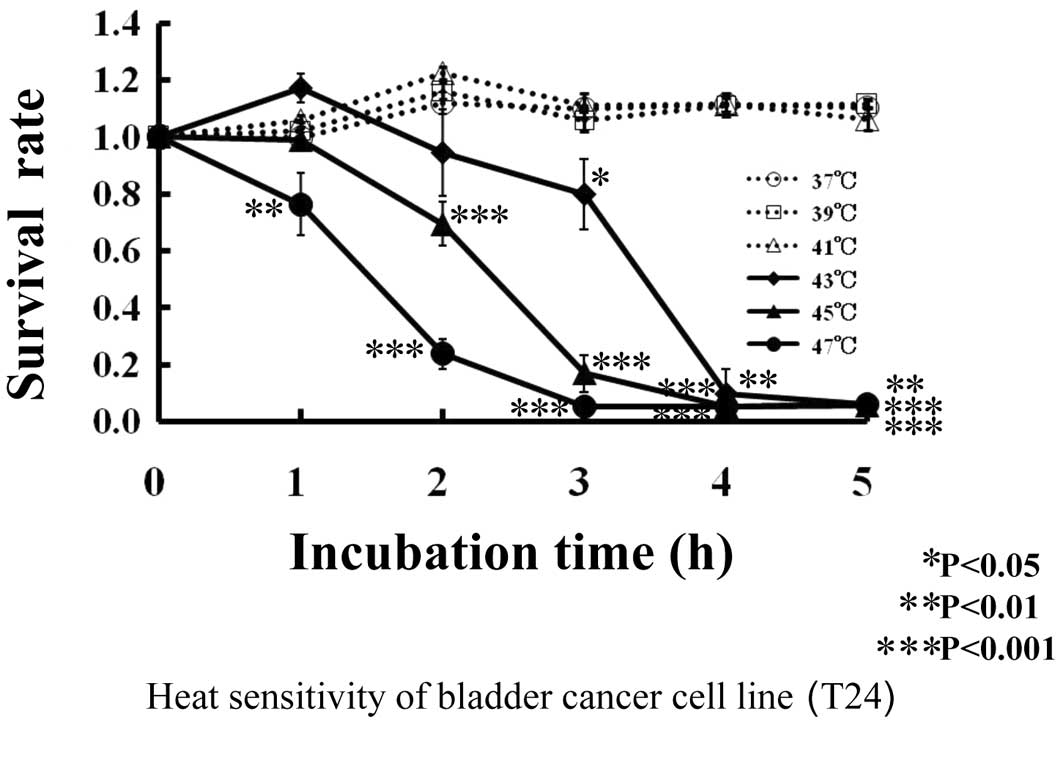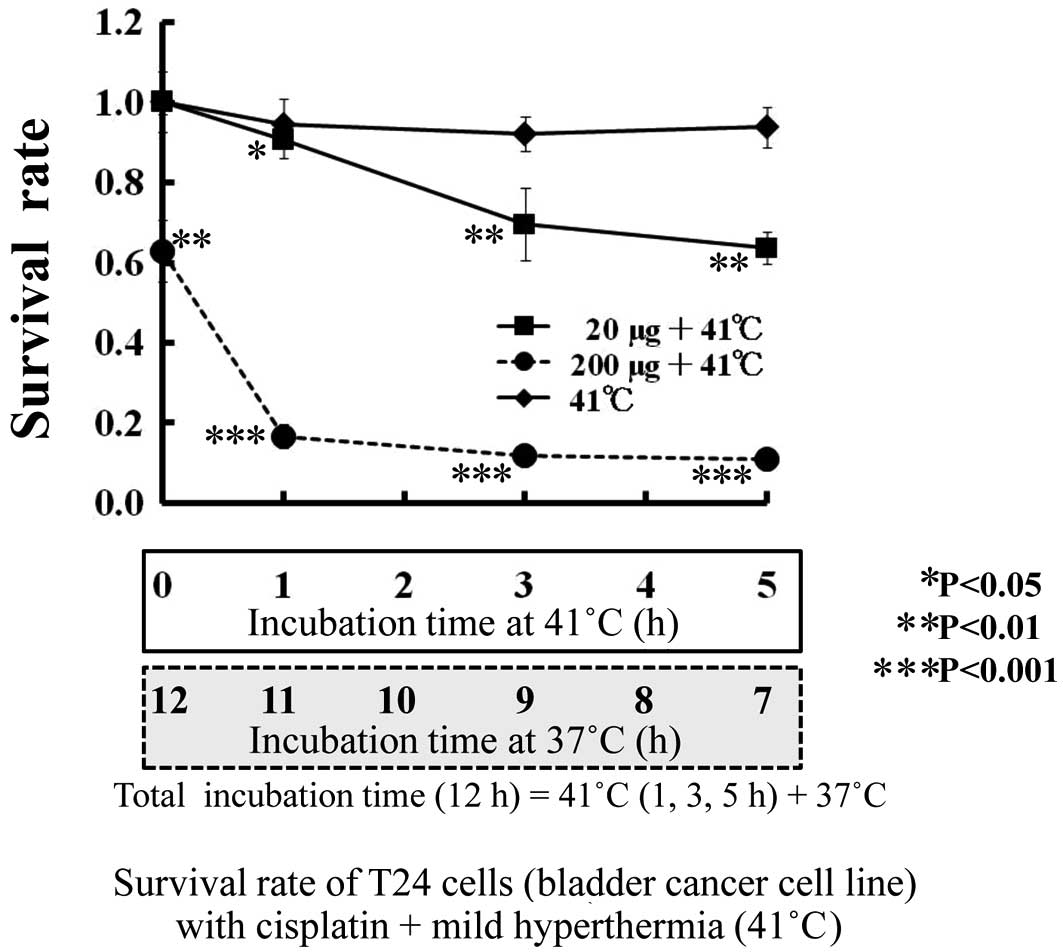Combination of chemotherapy and mild hyperthermia enhances the anti-tumor effects of cisplatin and adriamycin in human bladder cancer T24 cells in vitro
- Authors:
- Published online on: March 1, 2010 https://doi.org/10.3892/etm_00000049
- Pages: 319-323
Metrics: Total
Views: 0 (Spandidos Publications: | PMC Statistics: )
Total PDF Downloads: 0 (Spandidos Publications: | PMC Statistics: )
Abstract
Although the combined effects of hyperthermia and chemotherapy for cancer therapy have been theoretically established, combination therapy with hyperthermia is not widely used clinically, since the application of hyperthermia is complex and maintaining a tumor temperature of 43°C or above is very difficult. Thus, in the present study, the combined effects of chemotherapy and mild hyperthermia, which is easier to apply than hyperthermia, were examined using a human bladder cancer cell line, T24. T24 cells were incubated at 37-47°C for 0-5 h, and the survival rate of cells was measured using the MTT method. Cisplatin and adriamycin, which are indicated for human bladder cancer, were used as anti-tumor drugs. In the combination experiment, T24 cells were treated with cisplatin (20 and 200 µg/ml) or adriamycin (4 and 40 µg/ml) at 41°C for 0-5 h and at 37°C for 7-12 h. After a total incubation of 12 h, cell survival was measured by the MTT method. i) T24 cells, like cells in general, survived mild hyperthermia at 41°C, but were killed at over 43°C. ii) Although a low concentration (20 µg/ml) of cisplatin or of mild hyperthermia at 41°C did not affect the survival rate of T24 cells, this combination therapy decreased the survival rate of T24 cells with increasing incubation times at 41°C. The anti-tumor effect of the combination of 20 µg/ml cisplatin and 41°C for 5 h was the same as that of 10 times the concentration (200 µg/ml) of cisplatin. iii) Adriamycin showed the same effects as cisplatin. The anti-tumor effect of the combination of 4 µg/ml adriamycin and 41°C for 5 h was identical to the anti-tumor effect of a 10-fold higher concentration (40 µg/ml) of adriamycin. Based on these results, combination with mild hyperthermia may enable a reduction in the dose of anti-tumor drugs. It was suggested that the side effects of chemotherapy could be reduced clinically by combining the drugs with mild hyperthermia. Mild hyperthermia might be a useful and practical heating method which could lead to the increased clinical applications of hyperthermia. We previously reported the preliminary results of M-VAC chemotherapy (methotrexate, vinblastine, doxorubicin and cisplatin) combined with mild hyperthermia, a new therapeutic strategy for advanced or metastatic transitional cell carcinoma of the urothelium. This basic research strongly supports the clinical beneficial results of chemotherapy combined with mild hyperthermia.












